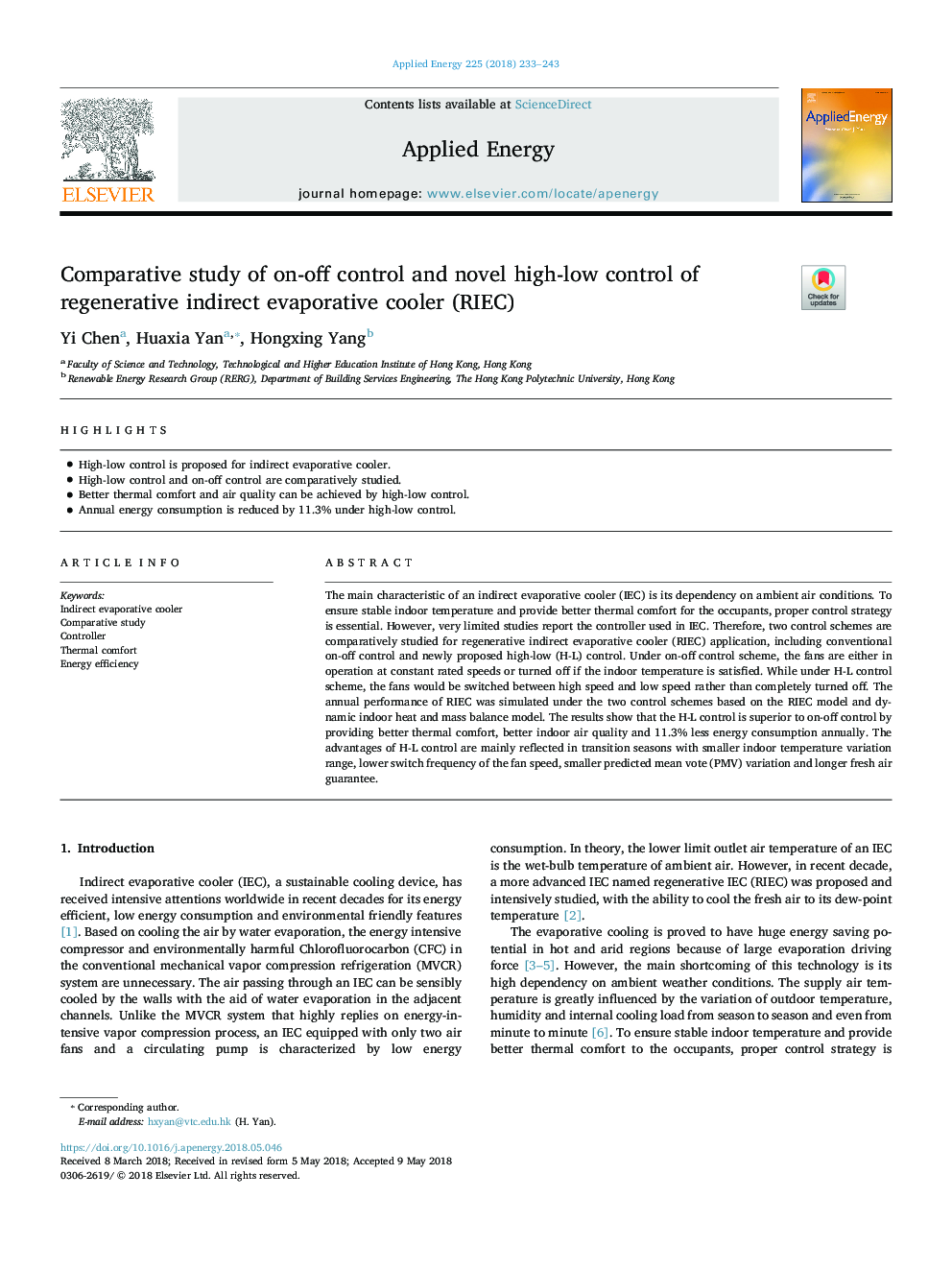| Article ID | Journal | Published Year | Pages | File Type |
|---|---|---|---|---|
| 6679906 | Applied Energy | 2018 | 11 Pages |
Abstract
The main characteristic of an indirect evaporative cooler (IEC) is its dependency on ambient air conditions. To ensure stable indoor temperature and provide better thermal comfort for the occupants, proper control strategy is essential. However, very limited studies report the controller used in IEC. Therefore, two control schemes are comparatively studied for regenerative indirect evaporative cooler (RIEC) application, including conventional on-off control and newly proposed high-low (H-L) control. Under on-off control scheme, the fans are either in operation at constant rated speeds or turned off if the indoor temperature is satisfied. While under H-L control scheme, the fans would be switched between high speed and low speed rather than completely turned off. The annual performance of RIEC was simulated under the two control schemes based on the RIEC model and dynamic indoor heat and mass balance model. The results show that the H-L control is superior to on-off control by providing better thermal comfort, better indoor air quality and 11.3% less energy consumption annually. The advantages of H-L control are mainly reflected in transition seasons with smaller indoor temperature variation range, lower switch frequency of the fan speed, smaller predicted mean vote (PMV) variation and longer fresh air guarantee.
Related Topics
Physical Sciences and Engineering
Energy
Energy Engineering and Power Technology
Authors
Yi Chen, Huaxia Yan, Hongxing Yang,
